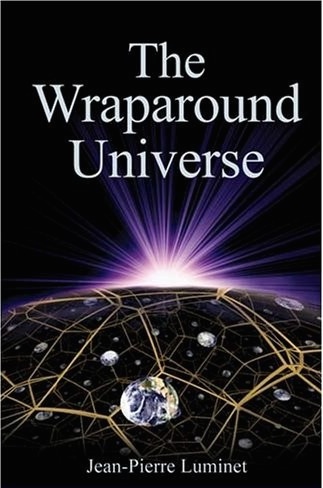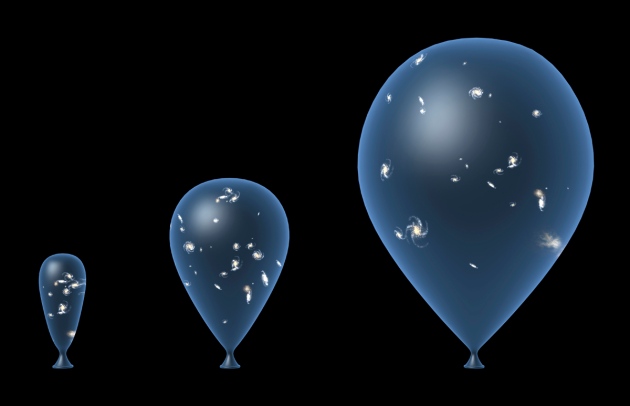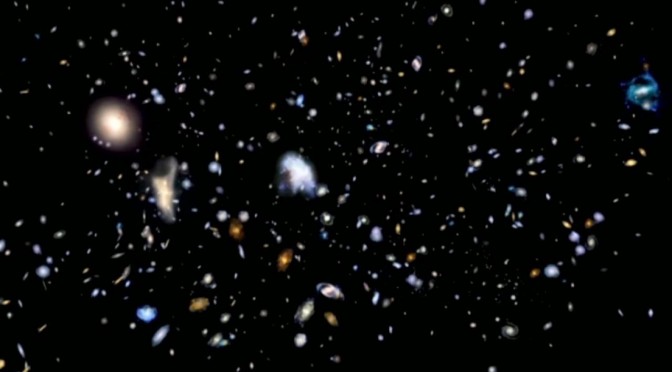 This post is an adaptation of a chapter of my book “The Wraparound Universe” with many more illustrations.
This post is an adaptation of a chapter of my book “The Wraparound Universe” with many more illustrations.
Expansion and the Infinite
Space alike to itself
that it grows or denies itself
Stéphane Mallarmé
The Universe is expanding. What does this really mean? Most people imagine an original huge explosion, as the term “big bang” suggests, and the metaphor is constantly used in popular accounts. Some speakers even have the tendency to mime a gesture of expansion with their hands, as if they were holding a piece of space or an immaterial balloon in the process of inflating. The public imagines some matter ejected at prodigious speeds from some center, and tell themselves that it would be better not to be there at the moment of explosion, so as not to be riddled through with particles.

None of all this is accurate. At the big bang, no point in the Universe participated in any explosion. Put simply, if one considers any point whatsoever, we notice that neighboring points are moving away from it. Is this to say that these points are animated by movement, given a speed? No, they are absolutely fixed, and nevertheless they grow apart.
To unravel this paradox, it is necessary to make more precise what one exactly means when speaking of a fixed point. The position of a point is fixed by coordinates: one number for a line (the miles along a highway), two numbers for a surface (latitude and longitude), and three for space in general (length, width, and height). A point is said to be fixed if its coordinates do not change over the course of time. In an arbitrary space, curved or not, the distance between two points is given by the so-called metric formula, which depends on the coordinates and generalizes the Pythagorean theorem. In principle, therefore, the distance between two points does not vary. In an expanding space, on the other hand, this distance grows, while the points do not move, even by a millimeter, meaning that they strictly conserve the same coordinates. These fixed coordinates are known as “comoving” coordinates. In relativistic cosmology, galaxies remain fixed at comoving positions in space. They may dance slight arabesques around these positions, under the influence of local gravitational fields, but the motion which moves them apart from each other resides in the literal expansion of the space which separates them. Continue reading Expansion and the Infinite
